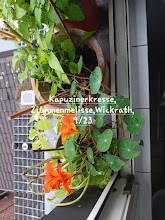dali48 and writing books and photographing apple blossoms in the park of Wickrath Castle, June 2012 etc.
11.01.2014 - Guava fruit juice and Health etc. by dali48
see 30.06.2012 - Guava fruit juice and Health etc. by dali48
on http://www.dali48.blogspot.com
30.06.2012 - Interpretation of dali48
Guavas are plants in the Myrtle family (Myrtaceae) genus Psidium (meaning "pomegranate" in Latin), which contains about 100 species of tropical shrubs and small trees. They are native to Mexico, Central America, and northern South America. Guavas are now cultivated and naturalized throughout the tropics and subtropics in Africa, Southeast Asia, the Caribbean, subtropical regions of North America, and Australia...
The term "guava" appears to derive from Arawak guayabo "guava tree", via the Spanish guayaba. It has been adapted in many European languages: goiaba (Portuguese), Guave (Dutch and German), goyave (French), the Japanese guaba (グアバ)...
The fruit is not only relished by humans, but by many mammals and birds as well. The spread of introduced guavas owes much to this fact, since animals eat the fruit and disperse the seeds in their droppings...
In several tropical regions, including Hawaii, some species (namely Strawberry Guava, P. littorale, and to a lesser extent Apple Guava) have become invasive species. On the other hand, several species have become very rare due to habitat destruction and at least one (Jamaican Guava, P. dumetorum), is already extinct...
Guava wood is used for meat smoking in Hawaii and is used at barbecue competitions across the United States. In Cuba and Mexico the leaves are used in barbecues...
Guava fruit generally have a pronounced and typical fragrance, similar to lemon rind but less sharp. Guava pulp may be sweet or sour, tasting something between pear and strawberry, off-white ("white" guavas) to deep pink ("red" guavas), with the seeds in the central pulp of variable number and hardness, depending on species...
Guavas are cultivated in many tropical and subtropical countries. Several species are grown commercially; apple guava and its cultivars are those most commonly traded internationally...
Guavas are also of interest to home growers in temperate areas. They are one of the few tropical fruits that can grow to fruiting size in pots indoors. When grown from seed, guavas can bear fruit as soon as two years, or as long as eight years...
In Mexico, the Agua fresca beverage is popularly made with Guava. The entire fruit is a key ingredient in punch, and the juice extract is often used in culinary sauces (hot or cold), as well as artisan candies, dried snacks, fruit bars, desserts, or dipped in Chamoy. Pulque de Guava is a popular blend of the native alcoholic beverage...
Because of its high level of pectin, guavas are extensively used to make candies, preserves, jellies, jams, and marmalades (such as Brazilian goiabada and Colombian and Venezuelan bocadillo), and also for juices (see Guava fruit juice which I tried for the first time in an Asian shop near the Central Library in Düsseldorf in the 80s etc. - d.48) and aguas frescas...
In Asia, a drink is made from an infusion of guava fruits and leaves. In Brazil, the infusion made with guava tree leaves (chá-de-goiabeira, i.e. "tea" of guava tree leaves) is considered medicinal...
Guavas are rich in dietary fiber, vitamins A and C, folic acid, and the dietary minerals, potassium, copper and manganese. Having a generally broad, low-calorie profile of essential nutrients, a single common guava (P. guajava) fruit contains about four times the amount of vitamin C as an orange...
From preliminary medical research in laboratory models, extracts from apple guava leaves or bark are implicated in therapeutic mechanisms against cancer, bacterial infections, inflammation and pain. Essential oils from guava leaves display anti-cancer activity in vitro...
Guava leaves are used in folk medicine as a remedy for diarrhea and, as well as the bark, for their supposed antimicrobial properties and as an astringent. Guava leaves or bark are used in traditional treatments against diabetes. In Trinidad, a tea made from young leaves is used for diarrhea, dysentery and fever... (Wikipedia)




